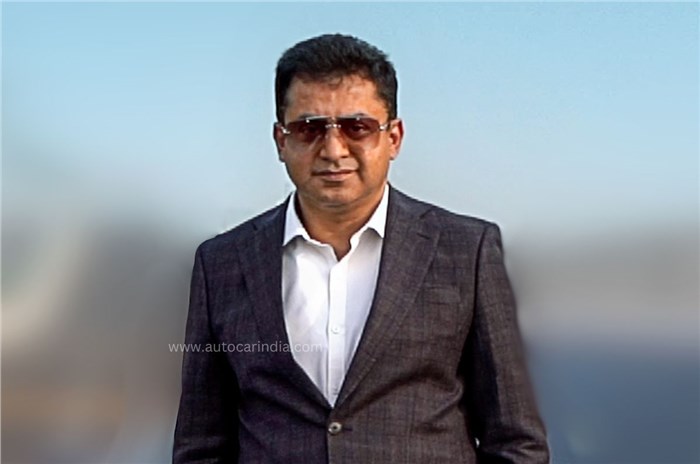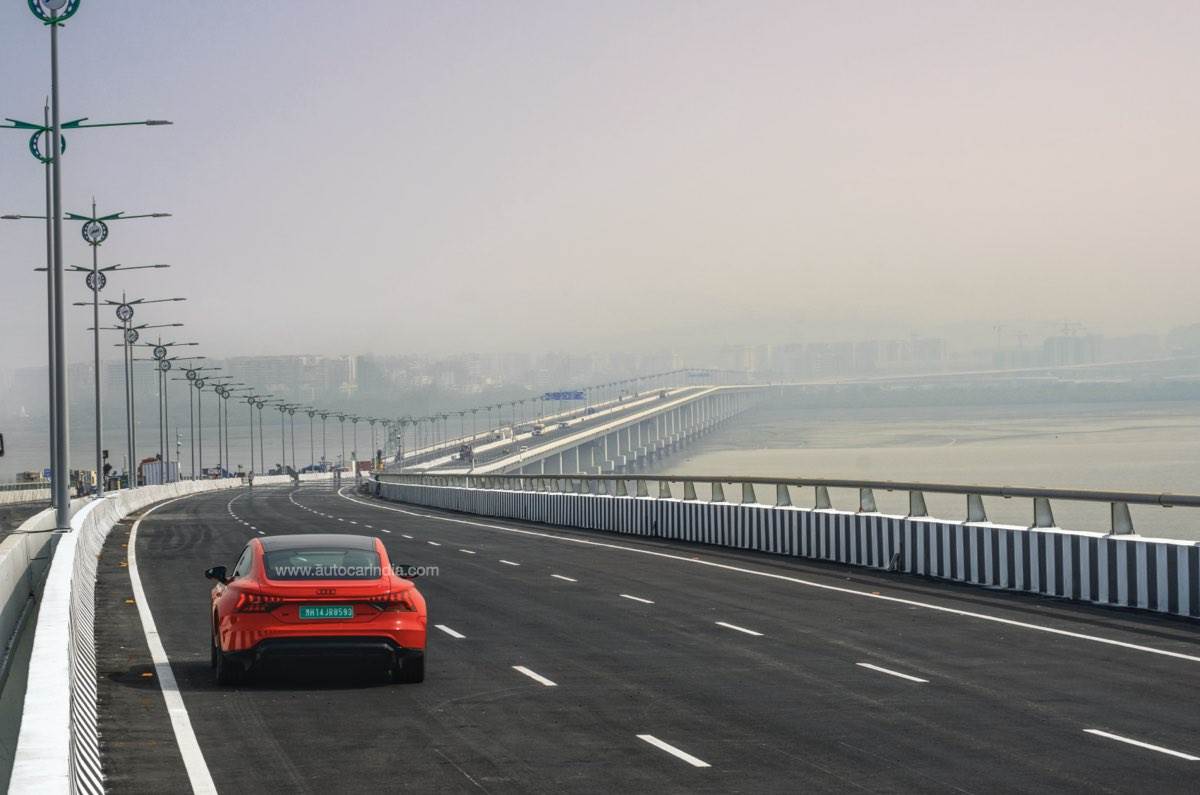We drive on the 21.8km-long Atal Setu that connects Sewri with the mainland, in an Audi RS e-tron GT.
Mumbai, the financial capital of India, sits on the west coast of India. Only it doesn’t. Originally a group of seven islands merged over the years into one single entity, it is situated approximately 10km off the western seaboard of India.
This is why connectivity with the mainland of India has always been something of a long trudge. To go north is easy, the mainland isn’t far. But to go east or south, you first had to travel 40km north to Thane, take a U-turn, then backtrack another 20km before starting your journey, and this took hours. Then in 1973, the authorities in Mumbai built a bridge across the Vashi creek, making the drive around considerably shorter. You still needed to backtrack 20 odd kilometres, but it did save a big chunk of time.
Mumbai Trans Harbour Link: saving time
This then, fifty years on, is the next step; a bridge that connects the heart of Mumbai to the west coast of India. No need to drive 20km, take a U-turn, backtrack. With the Mumbai Trans Harbour Link (MTHL) or Atal Bihari Vajpayee Smruti Sewri-Nhava Sheva Atal Setu, you can cross directly onto the mainland.
To drive onto the MMRDA-built Atal Setu, all you have to do is hook right on Mumbai’s Eastern Freeway and drive straight on. We first pass through a spaghetti bowl of eight on and off ramps that look straight out of a sci-fi movie. As the bridge stretches out ahead, I’m happy I have something fast, fun and appropriately forward-looking today; Audi’s RS e-tron GT. This electric supercar puts down 646hp on the road and does 0-100kph in just 3.3 seconds. And as I zoom onto the bridge – the RS pushing me back in the seat – I can’t help but marvel at the scale and size of it.
The roads are perfectly lined up ahead, there are three lanes (plus one emergency lane), the heavy duty guard rail and retaining wall can contain a fully loaded trailer, and the gantries above even have speed guns and cameras already mounted. Why couldn’t we have made a similar bridge earlier?
Fact is, a similar bridge was thought about and discussed. The bridge back in the ‘80s would have cost around Rs 2,000 crore. Today, that figure is close to Rs 18,000 crore and the Mumbai Metropolitan Region Development Authority (MMRDA) along with finance and technical collaborations from Japan started construction in 2017. More on this later.
Mumbai Trans Harbour Link: the drive
The road up ahead is totally empty and I can’t resist a long, hard pull. As I mash the accelerator down, the Audi bolts forward, and what makes things even more exciting is that the bridge now curves right. The shortest and quickest way of course would have been to go straight, but the Atal Setu has to meander its way around a myriad of hurdles.
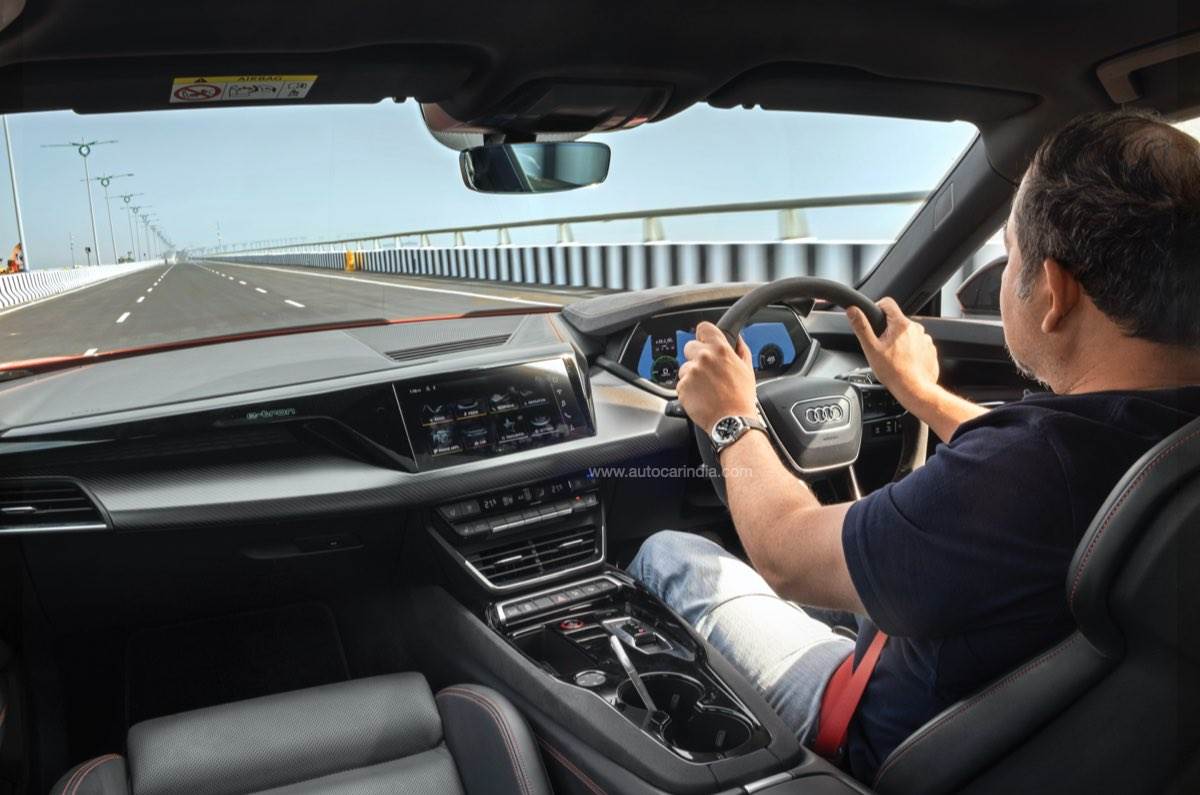
So why does it twist and turn and rise and dip? The initial turn right is done to stay clear of the refineries on our left; there are a couple of them. Then there are a couple of power stations, after which the bridge needs to daintily step over gas and oil pipelines that drift and move with the tide. The first step up to a higher level is to allow easy passage to creek dredgers, ships that constantly de-silt the channel. And further up, the bridge rises again to its maximum height of 32 metres (according to the display on the Audi) to allow for larger ships to pass below.
As we continue on our drive, we pass a group of workers erecting barriers. There are a couple of types used on the bridge; transparent ones keep the sound in but allow you to see out, and towards the refinery and other sensitive installations, there are slatted baffles that block your view.
Mumbai Trans Harbour Link: environment-friendly
This bridge has also been designed keeping the environment in mind; specifically the intertidal mudflats. Ecologically sensitive, these mudflats support a lot of biodiversity such as flamingos and other water birds, so plans for a sea link-like cable-stay bridge were scrapped — the fanning cables would have interfered with the flight path of the flamingos. In addition, to protect the biodiversity that lives on the mudflats, no permanent embankments were allowed to be built, and this made erecting the massive pillars and spans of the bridge extremely expensive and difficult, forcing them to do it from temporary bridges and floating barges.
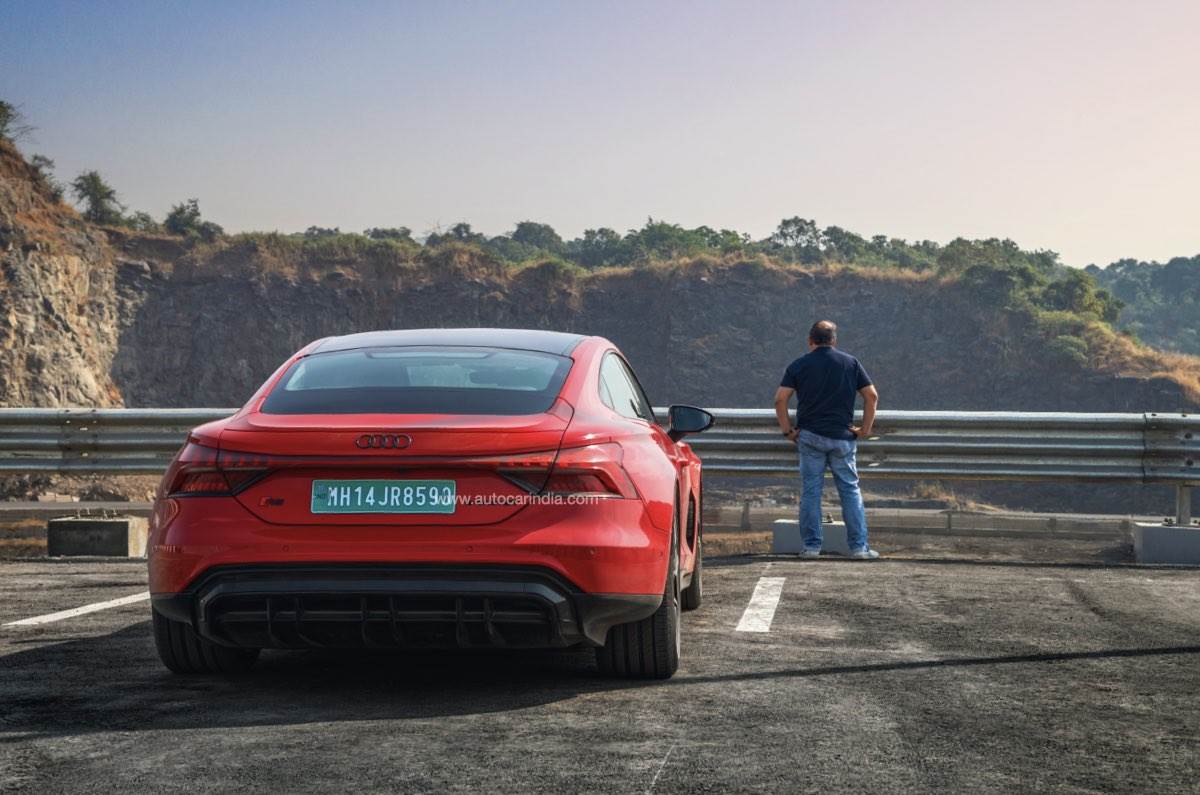
The Ministry of Environment and Forest also directed the project leaders to set aside around 2 percent of the cost of the project, around Rs 330 crore, for the replantation of mangroves, air and water pollution monitoring and flamingo monitoring. A sum of around Rs 30 crore was paid to the Bombay Natural History Society to monitor the latter for 10 years. Concerning the efforts to be eco-friendly Sanjay Mukherjee, Metropolitan Commissioner, MMRDA, said, “Considering the environmental impact and the minimum disturbance to the flora and fauna, we have used reverse circulation drills when we have drilled in and that has caused minimum vibration and minimum disturbance to the marine life and aquatic life and other life around this area.”
Back on the ‘gas’ in the Audi and I’m revelling in how planted it feels. The low-slung battery, the sporty and sophisticated suspension, and the stiffness of the chassis make the car feel super comfortable at high speeds. Up ahead there’s another steep rise with the road disappearing over the crest. As we get into a corner towards the top we notice that the side of the bridge is painted a shade of pink. Done to indicate the largest and highest span to ships passing under, the colours are also chosen keeping the flamingos in mind.
As the road dips down again and we effortlessly gain speed, I spot the mainland of India. But can this be right? We’ve only been driving for what feels like 15 or 20 minutes. Then I look down at the speedo; better slow down. And that’s the other thing about this bridge, the tarmac is just brilliant. Smooth, silent, well marked with wide lanes and near seamless transitions between the segments, this will be Mumbai’s best surfaced road.
As we pass Elephanta island on the right, and another drop, we now clearly see the mainland of India. The connecting roads up ahead aren’t finished, so we drive up to a ramp that ends abruptly.
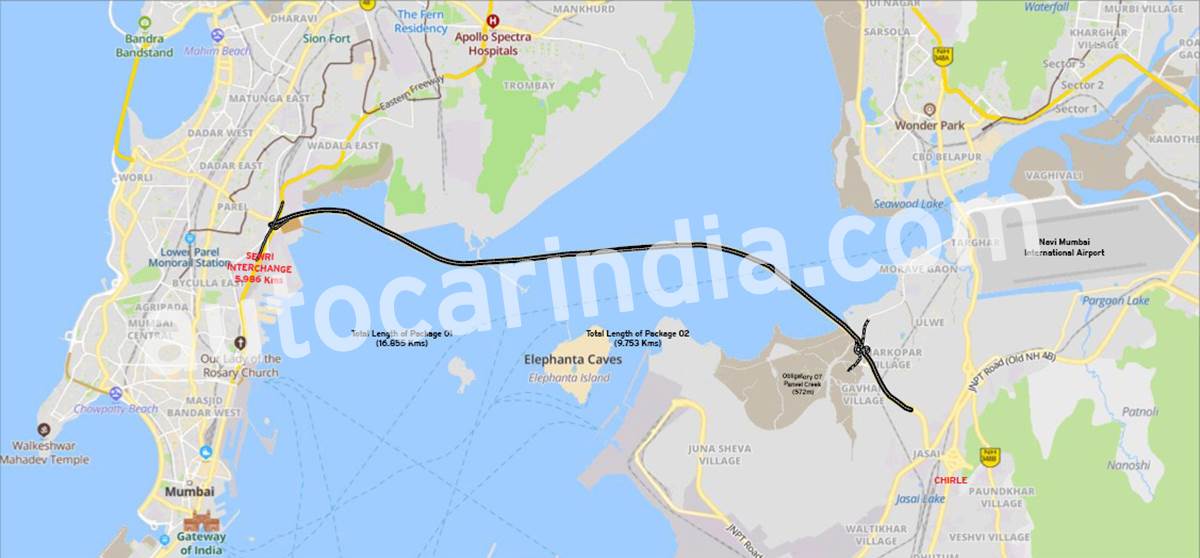
Wow what a ride! And a healthy 100kph speed limit. Also, once all the connectors and roads are finally built, most journeys out of Mumbai will be considerably shorter. It will open up a whole new region of Mumbai for faster development; faster connectivity will mean the economy of Greater Mumbai and India will be boosted; and once the new airport opens up, it will only be a quick drive away. As Mukherjee says, “The connectivity of the MTHL to Marine Drive is also a very crucial thing. So we are constructing a tunnel and we shall be starting that work soon. That will be from Orange Gate on the Eastern Freeway down to Marine Drive.” There’s little doubt that the MTHL is going to change Mumbai forever. Like the name too; it was PM Vajpayee after all who dragged India into the modern era when it came to roads, and built the Golden Quadrilateral and many others, a fair number of them under budget.
Also see:



















